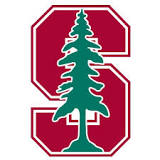The Convolutional Neural Network in this example is classifying images live in your browser using Javascript, at about 10 milliseconds per image. It takes an input image and transforms it through a series of functions into class probabilities at the end. The transformed representations in this visualization can be losely thought of as the activations of the neurons along the way. The parameters of this function are learned with backpropagation on a dataset of (image, label) pairs. This particular network is classifying
CIFAR-10 images into one of 10 classes and was trained with
ConvNetJS. Its exact architecture is [conv-relu-conv-relu-pool]x3-fc-softmax, for a total of 17 layers and 7000 parameters. It uses 3x3 convolutions and 2x2 pooling regions. By the end of the class, you will know exactly what all these numbers mean.
FAQ
Is this the first time this class is offered?
This course was previously taught in
Winter 2015 and
Winter 2016. This year's version of the course has been tweaked and updated to include new material where appropriate. The class is designed to introduce students to deep learning in context of Computer Vision. We will place a particular emphasis on Convolutional Neural Networks, which are a class of deep learning models that have recently given dramatic improvements in various visual recognition tasks. You can read more about it in this recent
New York Times article.
Can I take this course on credit/no cred basis?
Yes. Credit will be given to those who would have otherwise earned a C- or above.
Can I audit or sit in?
In general we are very open to sitting-in guests if you are a member of the Stanford community (registered student, staff, and/or faculty). Out of courtesy, we would appreciate that you first email us or talk to the instructor after the first class you attend. If the class is too full and we're running out of space, we would ask that you please allow registered students to attend.
Can I work in groups for the Final Project?
Yes, in groups of up to three people.
I have a question about the class. What is the best way to reach the course staff?
Stanford students please use an internal class forum on Piazza so that other students may benefit from your questions and our answers. If you have a personal matter, email us at the class mailing list cs231n-spring1617-staff@lists.stanford.edu.
Can I combine the Final Project with another course?
Yes, you may. There are a couple of courses concurrently offered with CS231n that are natural choices, such as CS231a (Computer Vision, by Prof. Silvio Savarese). Speak to the instructors if you want to combine your final project with another course.

